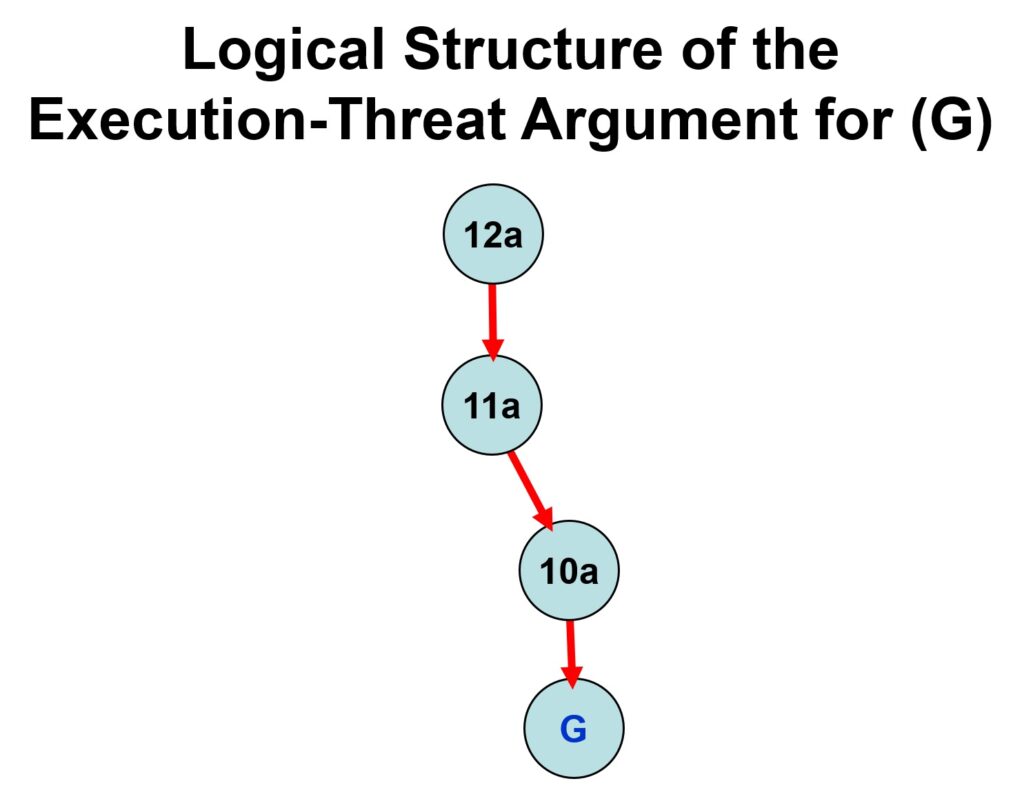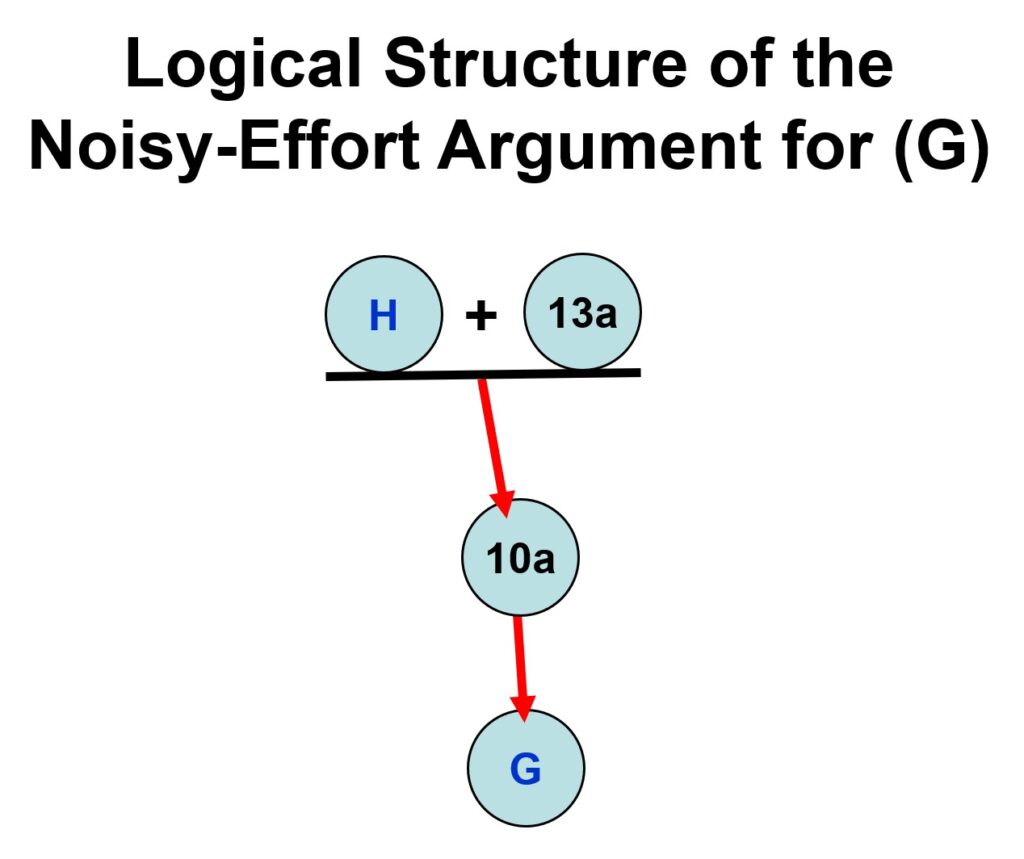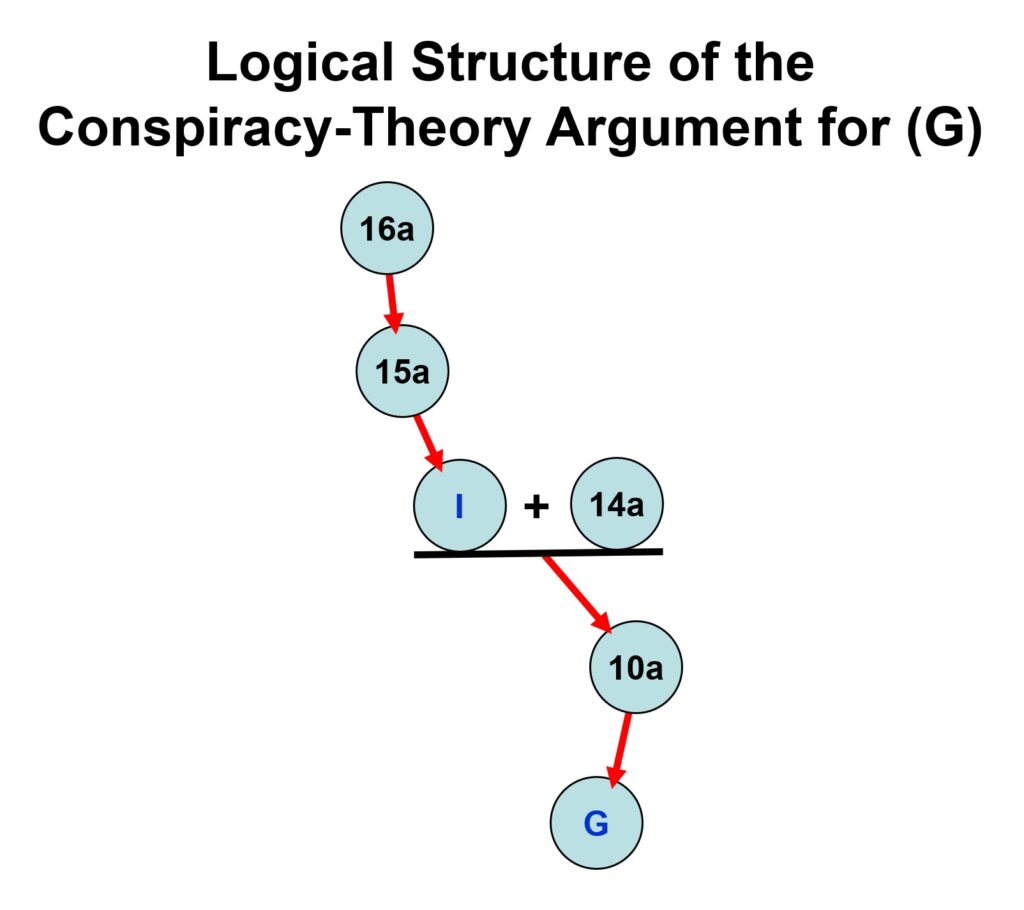Kreeft’s Case Against the Swoon Theory – Part 30: An Attempt to Repair the Arguments for (G)
THE CORE ARGUMENT FOR PREMISE (G)
Here, again, is the core argument for premise (G):
10a. The story that the Roman soldiers who were guarding Jesus’ tomb fell asleep while on duty on the weekend after Jesus was crucified and that some (or all) of Jesus’ eleven remaining disciples moved the stone from the door of Jesus’ tomb and stole the body of Jesus is unbelievable.
THEREFORE:
G. It is NOT the case that some (or all) of Jesus’ eleven remaining disciples moved the stone from the door of Jesus’ tomb on the weekend after Jesus was crucified.
In Part 29 of this series, I showed that the inference from premise (10a) to premise (G) was INVALID, and thus that premise (G) is DUBIOUS. I indicated that because the core argument for premise (G) was INVALID, I would not bother to carefully examine the sub-arguments in support of premise (10a). However, I will do some further examination of those sub-arguments for (10a) to see if they can be modified or repaired so that they become RELEVANT as support for premise (G).
Peter Kreeft and Ronald Tacelli put forward three sub-arguments against the theory that “The Disciples Stole Jesus’ Body while the Roman Soldiers Slept” (Handbook of Christian Apologetics, p.183-1484):
- The Execution-Threat Argument
- The Noisy-Effort Argument
- The Conspiracy-Theory Argument
In this current post, I will review these arguments to see if they can be modified or repaired to work as arguments for premise (G), as opposed to irrelevant arguments against the theory that “The Disciples Stole Jesus’ Body while the Roman Soldiers Slept”.
THE EXECUTION-THREAT ARGUMENT FOR PREMISE (10a)

12a. IF the Roman soldiers who were guarding Jesus’ tomb fell asleep while on duty to guard Jesus’ tomb on the weekend after Jesus was crucified, THEN the Roman soldiers who were guarding Jesus’ tomb would have been executed for failure to perform their guard duty.
THEREFORE:
11a. The Roman soldiers who were guarding Jesus’ tomb would NOT have fallen asleep while on duty to guard Jesus’ tomb on the weekend after Jesus was crucified.
THEREFORE:
10a. The story that the Roman soldiers who were guarding Jesus’ tomb fell asleep while on duty on the weekend after Jesus was crucified and that some (or all) of Jesus’ eleven remaining disciples moved the stone from the door of Jesus’ tomb and stole the body of Jesus is unbelievable.
This argument attempts to show that the Roman soldiers who were (allegedly) guarding the tomb of Jesus would NOT have fallen asleep. That point is RELEVANT to a refutation of the theory that “The Disciples Stole Jesus’ Body while the Roman Soldiers Slept”, because if the Roman soldiers did NOT fall asleep while on guard duty, then that theory would be FALSE.
But this point is IRRELEVANT to the Swoon Theory, because (a) the Swoon Theory does not assume or imply that there were any Roman soldiers guarding the tomb of Jesus, and because (b) the Swoon Theory does not assume or imply that the Roman soldiers who were guarding the tomb of Jesus fell asleep while on guard duty.
However, if we make an additional assumption and combine it with premise (11a), we can construct an argument that supports premise (G):
12a. IF the Roman soldiers who were guarding Jesus’ tomb fell asleep while on duty to guard Jesus’ tomb on the weekend after Jesus was crucified, THEN the Roman soldiers who were guarding Jesus’ tomb would have been executed for failure to perform their guard duty.
THEREFORE:
11a. The Roman soldiers who were guarding Jesus’ tomb would NOT have fallen asleep while on duty to guard Jesus’ tomb on the weekend after Jesus was crucified.
Q. IF the Roman soldiers who were guarding Jesus’ tomb did NOT fall asleep while on duty to guard Jesus’ tomb on the weekend after Jesus was crucified, THEN the Roman soldiers would have prevented Jesus’ disciples from moving the stone from the door of Jesus’ tomb on the weekend after Jesus was crucified.
THEREFORE:
G. It is NOT the case that some (or all) of Jesus’ eleven remaining disciples moved the stone from the door of Jesus’ tomb on the weekend after Jesus was crucified.
So, it appears that the EXECUTION-THREAT argument for (10a) can be modified or repaired to make it into an argument that supports premise (G).
THE NOISY-EFFORT ARGUMENT FOR PREMISE (10a)

H. IF the Roman soldiers who were guarding Jesus’ tomb on the weekend after Jesus was crucified were wakened by the noise from the attempt of some (or all) of Jesus’ eleven remaining disciples to move the stone from the door of Jesus tomb, THEN Roman soldiers would have prevented some (or all) of Jesus’ eleven remaining disciples from moving the stone from the door of Jesus’ tomb.
13a. IF the Roman soldiers who were guarding Jesus’ tomb fell asleep while on duty to guard Jesus’ tomb on the weekend after Jesus was crucified and some (or all) of Jesus’ eleven remaining disciples attempted to move the stone from the door of Jesus’ tomb on the weekend after Jesus was crucified, THEN the noise from the attempt to move the stone from the door of Jesus’ tomb would have wakened the Roman soldiers who were guarding Jesus’ tomb.
THEREFORE:
10a. The story that the Roman soldiers who were guarding Jesus’ tomb fell asleep while on duty on the weekend after Jesus was crucified and that some (or all) of Jesus’ eleven remaining disciples moved the stone from the door of Jesus’ tomb and stole the body of Jesus is unbelievable.
This argument attempts to show that the Roman soldiers who were (allegedly) guarding the tomb of Jesus would have prevented Jesus’ disciples from moving the stone. That point is RELEVANT to a refutation of the skeptical theory that “The Disciples Stole Jesus’ Body while the Roman Soldiers Slept”, because if the Roman soldiers would have prevented Jesus’ disciples from moving the stone even if the soldiers had fallen asleep, then this skeptical theory would be FALSE.
But the Swoon Theory does NOT assume or imply that there were any Roman soldiers guarding Jesus’ tomb, and the Swoon Theory does NOT assume or imply that Roman soldiers who were guarding Jesus’ tomb fell asleep while on guard duty. So, this point does not seem RELEVANT to the Swoon Theory.
However, if we make an additional assumption and combine the assumption with the first two premises of the NOISY-EFFORT argument, we can construct an argument that supports premise (G):
H. IF the Roman soldiers who were guarding Jesus’ tomb on the weekend after Jesus was crucified were wakened by the noise from the attempt of some (or all) of Jesus’ eleven remaining disciples to move the stone from the door of Jesus tomb, THEN Roman soldiers would have prevented some (or all) of Jesus’ eleven remaining disciples from moving the stone from the door of Jesus’ tomb.
13a. IF the Roman soldiers who were guarding Jesus’ tomb fell asleep while on duty to guard Jesus’ tomb on the weekend after Jesus was crucified and some (or all) of Jesus’ eleven remaining disciples attempted to move the stone from the door of Jesus’ tomb on the weekend after Jesus was crucified, THEN the noise from the attempt to move the stone from the door of Jesus’ tomb would have wakened the Roman soldiers who were guarding Jesus’ tomb.
R. IF the Roman soldiers who were guarding Jesus’ tomb did NOT fall asleep while on duty to guard Jesus’ tomb on the weekend after Jesus was crucified, THEN the Roman soldiers who were guarding Jesus’ tomb would have prevented some (or all) of Jesus’ eleven disciples from moving the stone from the door of Jesus’ tomb on the weekend after Jesus was crucified.
THEREFORE:
G. It is NOT the case that some (or all) of Jesus’ eleven remaining disciples moved the stone from the door of Jesus’ tomb on the weekend after Jesus was crucified.
So, it appears that we can modify or repair the NOISY-EFFORT argument for (10a) and turn it into an argument that supports premise (G).
THE CONSPIRACY-THEORY ARGUMENT FOR PREMISE (10a)

16a. In Chapter 8 of HCA, Kreeft and Tacelli show that the Conspiracy Theory has a number of unanswerable difficulties.
THEREFORE:
15a. The Conspiracy Theory has a number of unanswerable difficulties.
THEREFORE:
I. It is NOT the case that the Conspiracy Theory is true.
14a. IF the Roman soldiers who were guarding Jesus’ tomb fell asleep while on duty on the weekend after Jesus was crucified and some (or all) of Jesus’ eleven remaining disciples moved the stone from the door of Jesus’ tomb on the weekend after Jesus was crucified and stole the body of Jesus, THEN the Conspiracy Theory is true.
THEREFORE:
10a. The story that the Roman soldiers who were guarding Jesus’ tomb fell asleep while on duty on the weekend after Jesus was crucified and that some (or all) of Jesus’ eleven remaining disciples moved the stone from the door of Jesus’ tomb and stole the body of Jesus is unbelievable.
Because premise (14a) is specifically about the skeptical theory that “The Disciples Stole Jesus’ Body while the Roman Soldiers Slept”, this premise won’t work to challenge or refute the Swoon Theory, and won’t work to challenge or refute the claim that “some (or all) of Jesus’ eleven remaining disciples moved the stone from the door of Jesus’ tomb on the weekend after Jesus was crucified”.
However, we can modify the content of premise (14a) so that it becomes focused on the idea of some (or all) of Jesus’ remaining eleven disciples moving the stone, and then we can make an argument that is relevant to premise (G). Because this involves a significant change to the meaning of premise (14a), I will use a letter (the letter ‘S’) to designate the modified premise:
16a. In Chapter 8 of HCA, Kreeft and Tacelli show that the Conspiracy Theory has a number of unanswerable difficulties.
THEREFORE:
15a. The Conspiracy Theory has a number of unanswerable difficulties.
THEREFORE:
I. It is NOT the case that the Conspiracy Theory is true.
S. IF some (or all) of the remaining eleven disciples of Jesus moved the stone from the door of Jesus’ tomb on the weekend after Jesus was crucified, THEN the Conspiracy Theory is true.
THEREFORE:
G. It is NOT the case that some (or all) of Jesus’ eleven remaining disciples moved the stone from the door of Jesus’ tomb on the weekend after Jesus was crucified.
So, it appears that we can modify or repair the Conspiracy-Theory argument for premise (10a) and create an argument that supports premise (G) instead.
In the next post of this series, I will carefully evaluate these three modified arguments to determine whether any of them constitutes a good and strong argument for premise (G).



